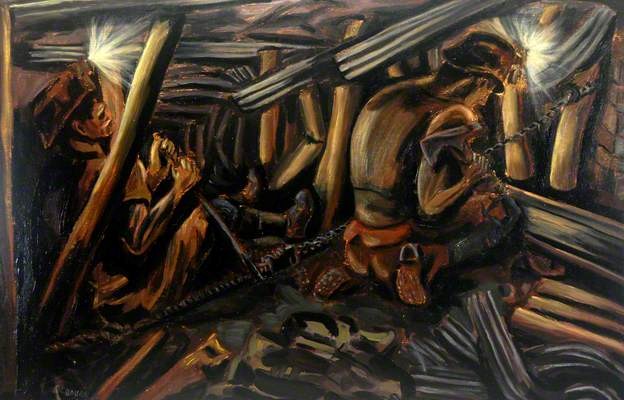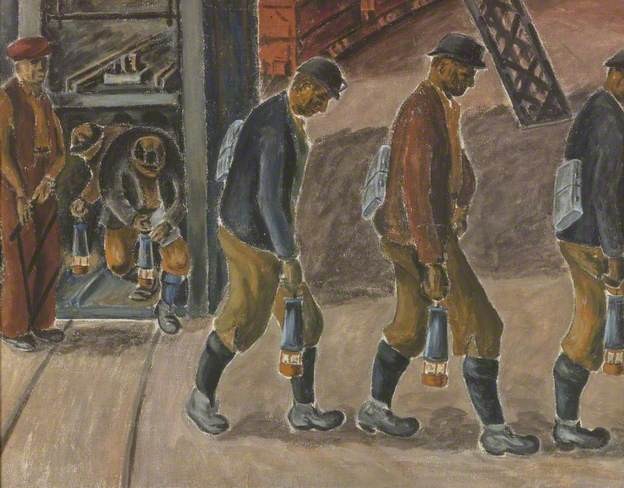Oliver Kilbourn, born October 1904, began working in the mines three days after his 13th birthday. Starting out at the Duke pit, he moved to the nearby Ellington colliery when he was 24. He spent the rest of his working life there: “I’ve spent shall we say about a third of my life in semi-darkness.”
But life in the mine is just one part of Oliver’s story. He was also one of the central members of the Ashington Group – a small society of local artists who became nationally and internationally celebrated for creating paintings that documented their lives.

In 1927, Oliver started going to evening classes organised by the Ashington Miners’ Union and the Workers’ Education Association (WEA). The first class was on the subject of ‘evolution’, and the group moved through several subjects before arriving at art appreciation in around 1935.
At first, the class tutor – Robert Lyon, himself a painter – struggled to make the course interesting to its members. But, after a few tricky sessions, Robert came up with a clever idea: he asked the group to create their own paintings in order to develop an appreciation of art.

The men started painting their own lives, capturing experiences that no one else – no matter their artistic training – could. When the war arrived, the men responded in kind, documenting air raid shelters, gas masks, evacuation procedures and Dig for Victory.
It soon became apparent that the group’s artwork deserved attention in its own right. Their first exhibition took place in Newcastle in 1936 and was exhibiting in London by the early 1940s. As the Group became more well known, it earned praise from several prominent British artists and critics, such as Julian Trevelyan and Henry Moore.

In the early 1970s, Oliver met with the art critic William Feaver, which led to much of the Group’s work being restored to feature in touring exhibitions. In the 1980s, the Group’s ‘Permanent Collection’ became the first western exhibition in China after the Cultural Revolution.
And in 2007, playwright Lee Hall (who also wrote Billy Elliot) adapted the Ashington Group story for the stage. The play had several run-out tours, nationally and internationally.